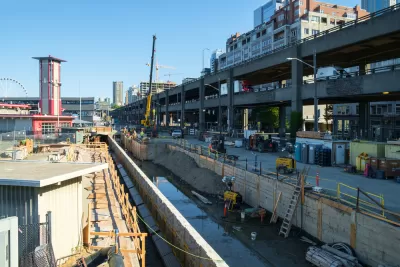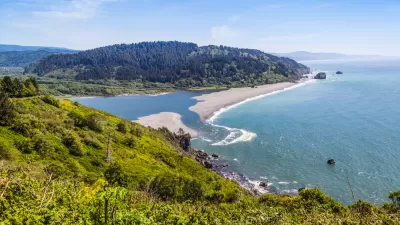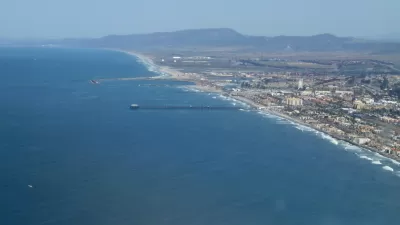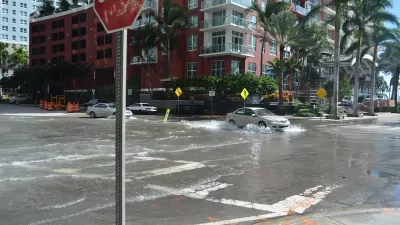Engineers and scientists in Seattle are testing a new generation of shoreline infrastructure that hopefully can do a better job of letting people and wild animals—in this case salmon—coexist.

Ken Christensen tells the story of Seattle's new $140 million seawall—an underappreciated but critical piece of infrastructure.
Christensen describes the seawall as an ongoing experiment in habitat restoration, in addition to the brute strength it provides to keep the rising tides at bay. Jeff Cordell, a fish biologist at the University of Washington, is quoted in the article saying the new Alaskan Way seawall is the first of its scale to try to improve habitat for fish.
For 80 years, the Alaskan Way seawall was like most: a smooth, vertical slab of concrete that held back the sea for the city’s bustling waterfront. It helped cement Seattle’s status as a commercial hub and deepwater port, but also sealed the fate of salmon habitat, locking away miles of gradually sloping beaches.
Now:
The new seawall should make life easier by featuring an underwater corridor for the fish to pass through on their way to the ocean. It’s illuminated by glass tiles in the pedestrian sidewalk above and filled with rocky surfaces where microalgae and small marine invertebrates are more likely to survive.
In the early days of the new seawall, the project shows promise, as filamentous microalgae has begun to show at low tide, which will make the new sea wall a more attractive environment for fish. If the experiment is successful, the new seawall could be a model for other coastal communities around the world, faced with the prospects of rising sea levels as a result of climate change.
FULL STORY: Can Seattle’s Seawall Defend The City And Protect Salmon, Too?

Alabama: Trump Terminates Settlements for Black Communities Harmed By Raw Sewage
Trump deemed the landmark civil rights agreement “illegal DEI and environmental justice policy.”

Study: Maui’s Plan to Convert Vacation Rentals to Long-Term Housing Could Cause Nearly $1 Billion Economic Loss
The plan would reduce visitor accommodation by 25% resulting in 1,900 jobs lost.

Planetizen Federal Action Tracker
A weekly monitor of how Trump’s orders and actions are impacting planners and planning in America.

Waymo Gets Permission to Map SF’s Market Street
If allowed to operate on the traffic-restricted street, Waymo’s autonomous taxis would have a leg up over ride-hailing competitors — and counter the city’s efforts to grow bike and pedestrian on the thoroughfare.

Parklet Symposium Highlights the Success of Shared Spaces
Parklets got a boost during the Covid-19 pandemic, when the concept was translated to outdoor dining programs that offered restaurants a lifeline during the shutdown.

Federal Homelessness Agency Places Entire Staff on Leave
The U.S. Interagency Council on Homelessness is the only federal agency dedicated to preventing and ending homelessness.
Urban Design for Planners 1: Software Tools
This six-course series explores essential urban design concepts using open source software and equips planners with the tools they need to participate fully in the urban design process.
Planning for Universal Design
Learn the tools for implementing Universal Design in planning regulations.
Caltrans
Smith Gee Studio
Institute for Housing and Urban Development Studies (IHS)
City of Grandview
Harvard GSD Executive Education
Toledo-Lucas County Plan Commissions
Salt Lake City
NYU Wagner Graduate School of Public Service





























